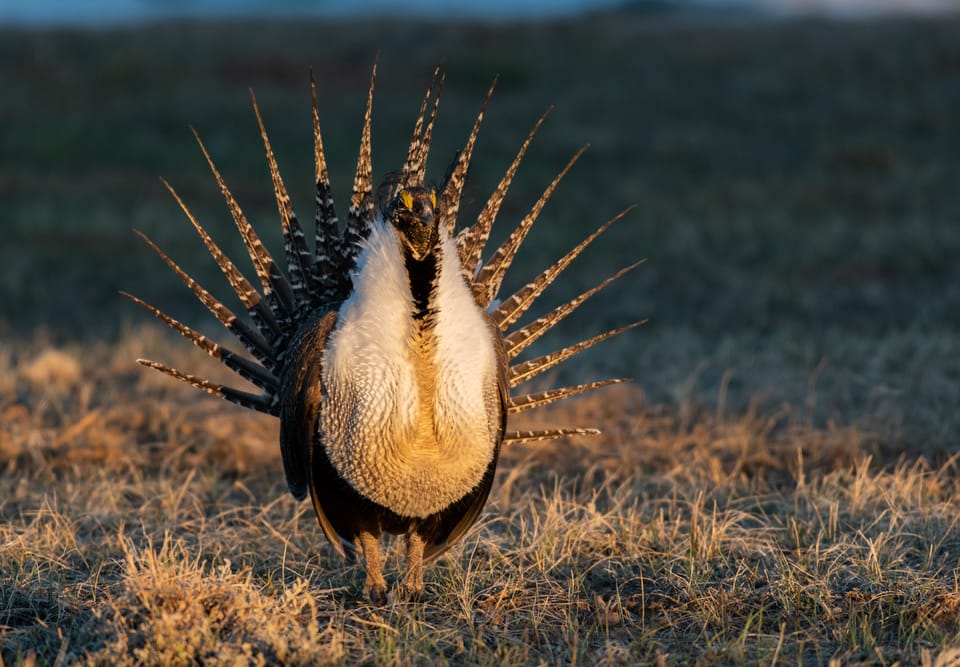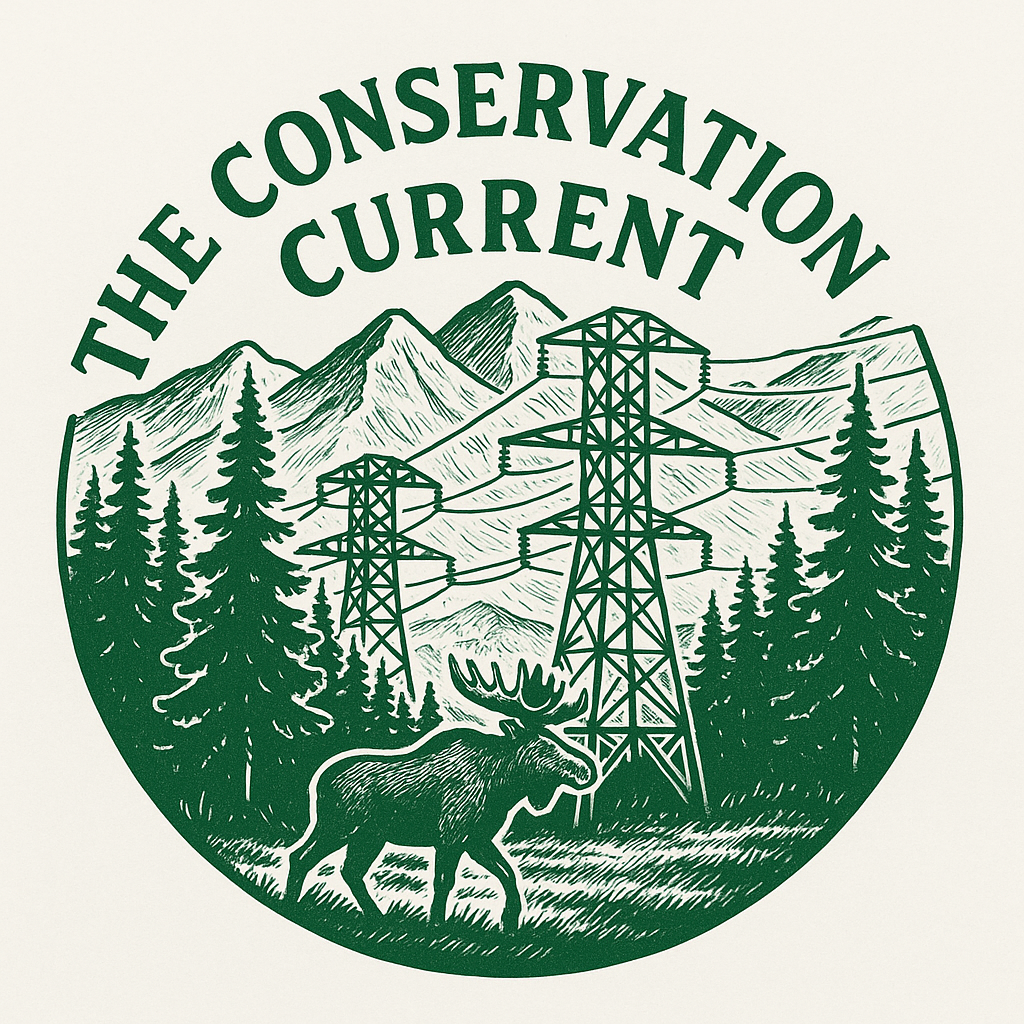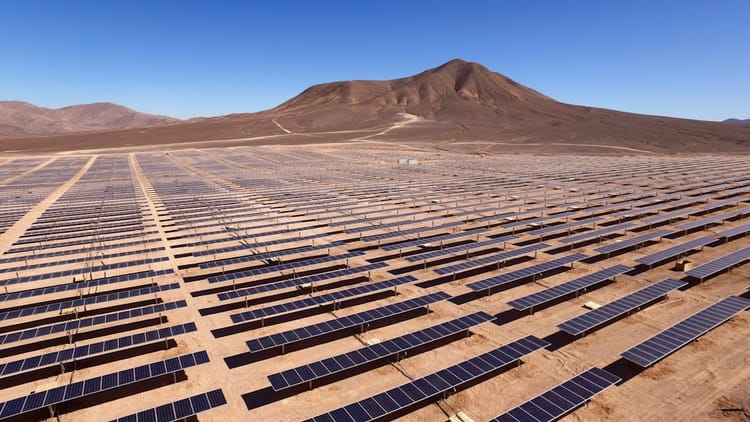What BLM's RMP Amendment Changes for the Proposed Resource Management Plan Amendment for the Greater Sage-Grouse Rangewide Planning

The short of it
BLM’s latest Greater Sage Grouse plan isn’t only about birds. It changes where energy projects like transmission lines, pipelines, and even renewables can and can’t go. If you care about public lands and the power grid, this update matters.
Comments on this RMP until October 3rd. Comment here on the Federal Register.
What’s actually changing
Priority Habitat Management Area (PHMA) cleanup, fewer loopholes.
BLM is scrapping the confusing “PHMA - with limited exceptions” subcategory. Those acres will revert back to full PHMA, the most protective zones.
PHMA are the most important, highest value sage grouse habitats - usually the large relatively intact areas around active breeding grounds and strong seasonal habitat.
Conservation Conclusion: GOOD - fewer carveouts inside the bird’s best remaining habitat.
Energy (Clean/Fossil Fuels) Conclusion: BAD - tighter, clearer protections in core habitat limit new disturbance.
Utah Boundary Alignment
BLM would reshape sage grouse habitat polygons to better match Utah’s state plan. Changing which acres carry strict stipulations vs standard multiple-use.
Conservation Conclusion: BAD - reduces the footprint of federally recognized habitat, shrinking acres under strong protections. Fewer acres will fall inside federally recognized categories (PHMA = core, GHMA = general"). Those dropped acres no longer carry the strongest sage grouse stipulations.
Energy (Clean/Fossil Fuels) Conclusion: GOOD - frees up more land for potential energy leasing and infrastructure alignment with Utah’s looser map.
NV/CA opens the door to big corridors.
In Nevada and California, General Habitat (GHMA) would shift from “avoidance” to “open” for major right-of-way (ROWs). Think high-voltage lines, and major pipelines. That doesn’t rubber stamp projects but it flips the default from “try not to” to “make your case.”
Conservation Conclusion: BAD - easier siting of long corridors means more habitat fragmentation in sagebrush country.
Energy (Clean/Fossil Fuels) Conclusion: GOOD - lowers barriers to building transmission lines. needed for large renewable projects
Adaptive management syncs with states.
Across several states, BLM proposes to align its “if this then that” triggers (population/habitat metrics) with state programs. That could speed up protective ratchets in bad years or relax them when conditions improve depending on state frameworks.
Conservation Conclusion: MIXED - could be good if states act fast on population declines, but bad if local politics weaken triggers.
Energy (Clean/Fossil Fuels) Conclusion: GOOD - clearer, state-synced rules reduce regulatory uncertainty for developers.
The grass-height standard gets flexible.
In places like Idaho and NV/CA, the numeric nesting benchmark becomes a qualitative standard. More room for local judgement, less enforceability.
Conservation Conclusion: BAD - softer, less enforceable standard makes it harder to hold the line on nesting habitat quality.
Energy (Clean/Fossil Fuels) Conclusion: NEUTRAL - may ease adjacent siting/grazing conflicts near projects.
Summary
BLM’s new Greater Sage-Grouse amendment is framed as housekeeping, but the changes carry real weight for how conservation and energy compete on western public lands. The agency is tightening protections in the best habitat by removing the “PHMA with limited exceptions” carve-out, but it’s also syncing adaptive management to state programs, loosening some standards, and in Utah, redrawing boundaries to match the state’s own sage-grouse plan. That last shift means fewer acres under the strictest federal habitat rules. Combined with a proposal in Nevada and California to flip General Habitat areas from “avoidance” to “open” for big rights-of-way, the amendment keeps the core intact but makes the edges more flexible. The result is a quiet tilt toward energy build-out that hasn’t been widely covered, but amounts to a small retreat for conservation.
Thank you for reading! I highlight threats to public lands and the energy industry’s impact. I believe clean energy is the future, and ALL energy projects should prioritize private land first to keep wild places wild. When energy extraction is needed on public lands all projects must restore the land after extraction. Public lands are unique and once lost, they’re gone forever.
Thanks for reading The Conservation Current! Subscribe for free to receive new posts and support my work.
Thanks for reading The Conservation Current! This post is public so feel free to share it.





